Immersion Heater Cost
Last updated 20th December, 2023
What does a new immersion heater cost?
This article discusses the costs involved in immersion heater replacement. We explore the different costs involved including the parts, the labour and where to find the best tradesman!
Continue reading below!
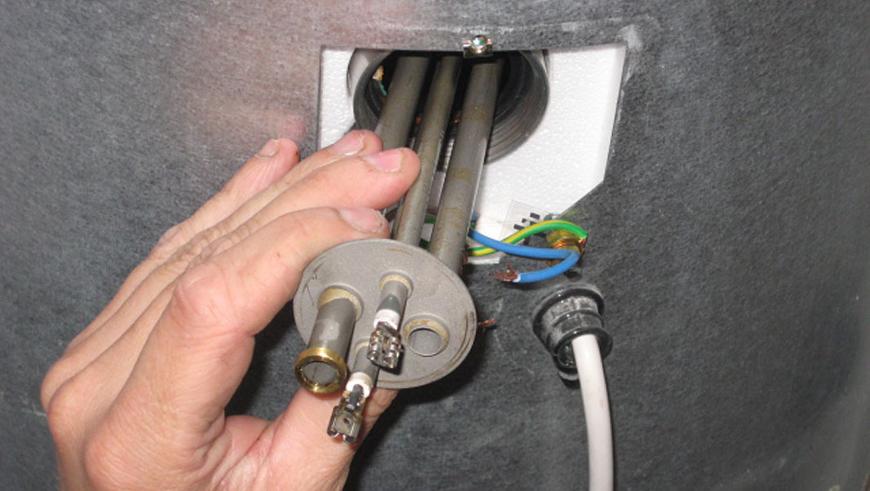
How Much Does Installing an Immersion Heater Cost?
Although most homes in the UK have a central heating system, there are some homes which use an immersion heater as a backup hot water source.
If you have had your immersion heater for a while or there is a fault, you may need to hire a professional heating engineer to replace it.
The average Immersion heater cost replacement will depend on the size and type you need.
For instance, copper immersion heaters start from £106 an 11" model and cost up to £120 for a 27" model, while Incoloy immersion heaters range from £106 for 11" and up to £130 for a 27" product.
The most expensive option is titanium which is typically priced at £118 for an 11" immersion heater with costs reaching up to £215 for a 27" element.
Other factors affecting immersion heater element replacement cost is the installation price which may vary depending on the level of access, along with the location of your property and the heating engineer's labour rates.
Immersion Heater Prices
Below you will find an immersion heater price breakdown of different sizes and materials.
| TYPE | 11" | 14" | 27" |
|---|---|---|---|
| Copper | £106 to £118 | £107 to £119 | £108 to £120 |
| Incoloy | £106 to £121 | £114 to £128 | £112 to £130 |
| Titanium | £118 to £130 | £120 to £140 | £120 to £215 |
Supply Costs
If you wish to replace your immersion heater on a DIY basis, then you can save money on labour, although you still need to consider the following supply costs:
| TYPE | 11" | 14" | 27" |
|---|---|---|---|
| Copper | £16 to £18 | £17 to £19 | £18 to £20 |
| Incoloy | £18 to £21 | £24 to £28 | £25 to £30 |
| Titanium | £28 to £30 | £30 to £40 | £30 to £115 |
Additional Costs
There are several other expenses you need to consider when calculating a new immersion heater cost, such as:
Radiator Replacement
If you notice that your home is not warm as normal, this may be caused by a faulty radiator which may feel cold all over or may even be leaking.
To replace your radiator, you should hire a professional heating engineer or plumber to remove and replace your old radiator which normally costs around £200 for a single radiator or up to £1300 to replace radiators in a typical three-bedroom property.
Underfloor Heating Installation
To improve heating efficiency in your home, you may want to consider having underfloor heating installed.
There are two different types of underfloor heating, including wet systems which are connected to the water supply and cost around £2500 to £4500.
Other options include electric underfloor heating which is powered by the electrical supply via pipes and costs around £1000 to £2000 per square metre to install.
Cost Breakdown Calculator
Individual costs of replacing a 27" titanium immersion heater - Total Cost: £120
Materials
£24
Trademen
£96
Waste Removal
£0
Labour Costs and Time Frames
For a tradesperson to complete this work, this should only take an hour or two typically, unless there are any complications which may require additional time or materials.
As a standard rate, this could be expected to be around £90 to £100, although this may vary depending on the tradesperson and the region.
The level of access will also determine the labour cost, as some engineers may charge more for the time, which is usually on an hourly basis, with typical rates ranging from £50 to £80 per hour.
Table of Contents
- How much does installing an immersion heater cost?
- Labour costs and time frames
- What is an immersion heater?
- Cost affecting factors of installing an immersion heater
- What does installing an immersion heater entail?
- DIY immersion heater installation
- Immersion heater repair and maintenance costs
- Choosing an immersion heater
- Alternatives to an immersion heater
- What are the advantages and disadvantages of an immersion heater?
- What immersion heater do I need?
- Cost of removing an immersion heater
- Frequently asked questions
- How to find & hire an immersion heater installer
- Sources
What is an Immersion Heater?
An electric immersion heater is just like a big kettle, heating the water in the storage cylinder using an element and providing hot water on demand even when the central heating is switched off, or your boiler is not working.
Immersion heaters are connected to their own power supply cable and can be set to come on automatically during the off-peak hours to take advantage of lower electricity prices.
Immersion heaters are normally utilised by smaller properties such as flats who do not have access to the gas supply and tend to use immersion heaters as their only hot water source.
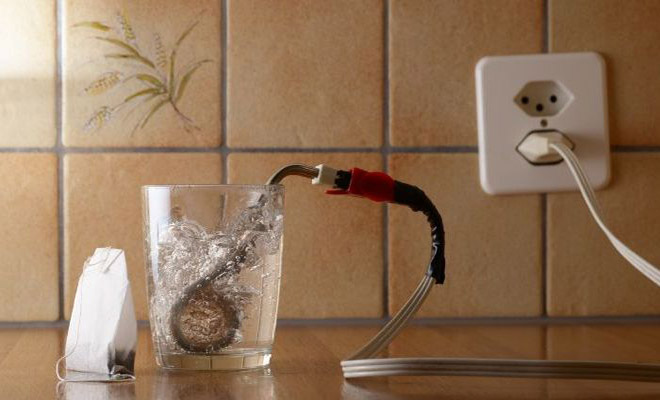
Unlike a kettle, most hot water cylinders have two or even three heating elements inside.
These heating elements will usually last many decades, but nothing lasts forever, and eventually, you will need a replacement element.
This is typically referred to as the heater, and it is normally just one of the elements that are replaced rather than the entire immersion tank.
Cost Affecting Factors of Installing an Immersion Heater
There are several cost affecting factors to take into account when calculating an immersion heater replacement.
This includes the type of immersion heater, with copper immersions heaters only costing around £16 to £20 for supply.
The next best budget option is an Incoloy immersion heater which ranges from £18 to £130, while titanium is the most expensive at £28 to £115.
The purchase price also differs depending on the size, so if you have an 11" immersion heater, you will pay a lot less than a 27" model.
While the cost of the immersion heater is important, the actual price of the immersion element is just a small part of the overall job.
You can expect to pay much more to include parts and labour.
Plus, you may need to replace two or three elements at the same time in some hot water cylinders as the chances are if one has failed then the others will soon fail if they were installed at the same time.
The final price will also be dependent on the location of the property, as tradesman or companies in London tend to charge significantly more than those working in outer areas.
What Does Installing an Immersion Heater Entail?
To help you understand the process involved in professional immersion replacement, take a look at this step by step guide.
- Disconnecting the power
The first step involves isolating the circuit in the consumer unit and turning the immersion heater switch off to make sure the immersion heater is electrically safe before proceeding.
- Testing the system
The tradesmen will then test the heating element to make sure there is no power using an electrical test meter, followed by disconnecting the electrical wiring and checking the thermostat.
If the thermostat is ok, then they will need to test the element for continuity, if the meter shows a very high resistance, then the element is open circuit, and the heater is broken.
- Shutting off the water
Before the immersion heater can be replaced, the tank will need first need to be drained via the gate vale or by turning off the main water supply.
Once the cold water stops entering the tank, the plumber will then attach a hosepipe to the drain plug at the bottom of the tank to completely clear the water out of the tank.
- Disconnect existing immersion heater
Once the tank is completely drained, the broken immersion heater should be disconnected from all wires and cables.
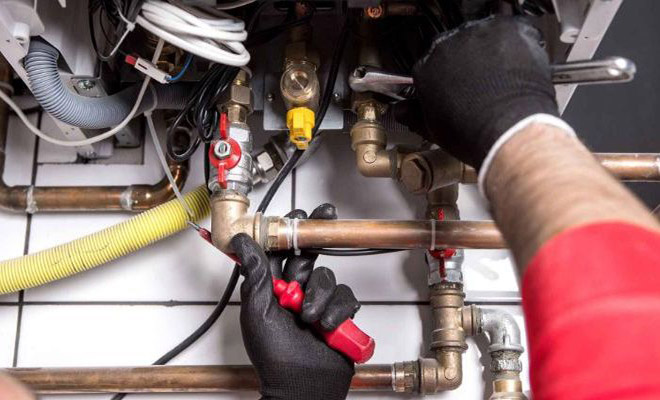
WD40 should then be applied to the tank and nut to make the removal much easier.
- Installing immersion heater
Once the old element is removed, you should replace it with the size immersion heater.
To secure it in place, the tradesman will wrap PTFT tap around it to ensure it is tight and durable.
- Finishing up
The final part of the job involves tightening the taps and drain plugs, while also refilling the cylinder, rewiring the thermostat and setting it to the right temperature.
They will then perform tests to ensure everything is working properly, including the immersion heater switch.
DIY Immersion Heater Installation
In most cases, replacing the heating element is a straightforward job if you are comfortable with basic electrical wiring and simple hand tools.
If you are considering replacing an immersion heater element as a DIY project, then first, check the problem is not in the fuse board/consumer unit, as this will require professional assistance.
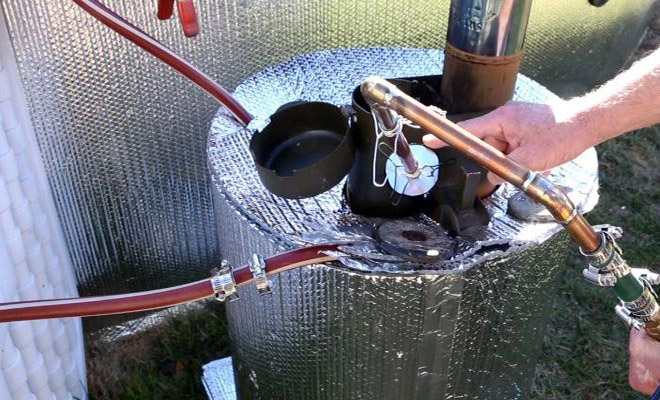
If the problem is with the electric immersion heater, then you can save a significant around £90 to £100 on labour costs by removing the broken element and replacing it with a new one.
To do this, you will need the following tools and equipment:
| Tool | Cost |
|---|---|
| Immersion spanner | £3 to £9 |
| WD40 lubricant | £2 to £8 per bottle |
| Hammer | £2 to £150 |
| PTFE tape | £0.30 to £0.50 per pack |
| Small screwdriver | £2 to £35 |
Once the job is complete, you will need to hire a professional tradesman to check the immersion heater is compliant with current electrical regulations.
Note that only tradesman listed under the competent person scheme can certify electrical work.
If you do not have the time or patience to carry out this job yourself, you can always call in a qualified electrician or plumber to change the immersion heater with no problems.
Immersion Heater Repair and Maintenance Costs
It's easy to tell when your immersion heater is not working, as often the whole house will be plunged into darkness as the circuit cuts out.
What usually happens is that the protective covering on the element breaks down and allows water in.
But water and electricity do not mix well, and a short circuit follows which will throw the circuit breaker in the consumer unit.
But sometimes it is not so disastrous, and you may just require the following repairs or maintenance:
Regular Servicing Cost
The main problems immersion heaters face is due to lack of maintenance, as homeowners tend to forget about their immersion heater until something goes wrong.
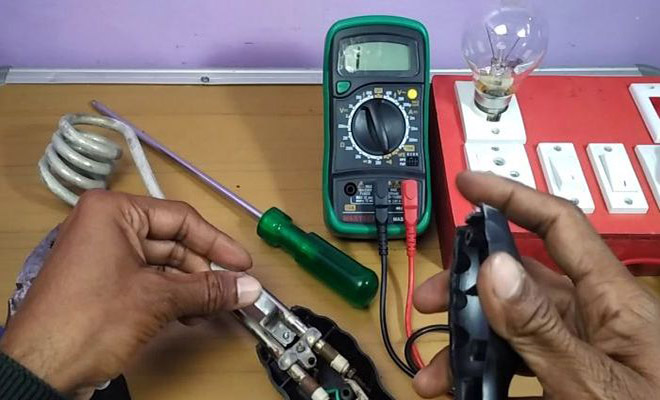
To prevent future issues, you should hire a qualified heating engineer or electrician to perform a service on your immersion heater at least once a year.
The cost of annual maintenance is normally around £60 to £100.
Thermostat Repair Cost
If you notice that your water is suddenly scalding hot or stops working, this may be an issue with the immersion heater thermostat.
To resolve the issue, you should hire an electrician to assess the thermostat and decide on the best solution.
The most common way to fix the problem is by replacing the thermostat, which, unlike immersion heater replacement does not require system draining.
The average cost to replace a thermostat will depend on the electrician's hourly rate, which is normally in the range of £40 to £80 an hour.
Wiring Replacement Cost
Another common issue that causes an immersion heater to stop working is a fault with the wiring.
This is common in DIY immersion heater installations, where the new element is fitted without proper care causing wires to snap.
To fix the issue, you should hire a competent electrician to fit new wires or fix the old ones which will cost around £80 to £160 for one to two hours work.
Choosing an Immersion Heaters
Before your immersion heater can be fitted, it is important that you choose the right immersion heater to fit in your hot water cylinder.
There are various types of immersion heaters, including:
Copper Immersion Heater Cost
Some of the most affordable immersion heaters made out of copper and normally cost around £16 to £20.
They are suitable for soft, and natural water areas such as domestic hot water cylinders and are usually available in sizes 11", 14" and 27".
The main advantage of copper immersion heaters is that they are extremely cheap to buy and install, even with a professional fitting.
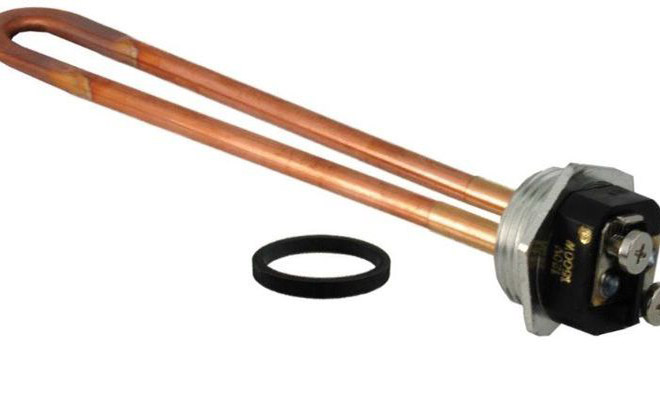
They are also very to install, so choosing a copper heating element can massively reduce labour costs.
The problem with copper immersion heaters is that they are not compatible with thermal store units, unvented cylinders or stainless steel tanks.
If copper is used with stainless steel, it can cause the copper parts to corrode, which can be costly to repair.
Incoloy Immersion Heater Cost
Incoloy immersion heaters are made up a mixture of superalloys which work in both hard and soft water areas.
This a mid-range immersion heater option which costs around £18 to £30 to purchase.
One of the main benefits of an Incoloy heating element is that they are highly resistant to corrosion, making it an ideal option for hard water areas.
They are also extremely robust and can withstand high-temperature environments while also providing excellent resistance against oxidation.
Incoloy immersion heaters should not be used in very hard water areas such as the South and East of England as they cannot withstand the pressure of the water intake.
Titanium Immersion Heater Cost
Titanium immersion heaters are a premium option which is normally used in hard water environments.
The typical price for titanium immersion elements is around £28 to £115.
One of the most prominent advantages of opting for a titanium immersion heating element is that are they extremely long-lasting due to their ability to withstand scalding temperatures.
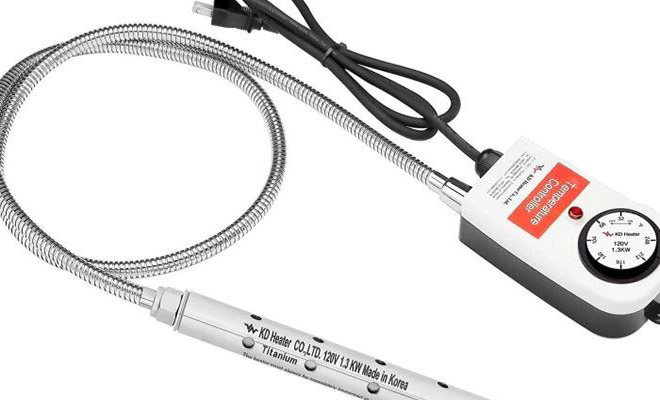
They are also highly-resistant to limescale build-up, which means they require less maintenance and offer the best value for money.
The main disadvantage of titanium immersion heaters is the price, as it is the most expensive option as it is a lot harder to manufacture than other metals.
Alternatives to an Immersion Heater
The main reason why many people use an immersion heater in their home is due to the fact that their property is powered by electric only.
If this is the case for you, then your options are not only limited to immersion heaters, as there are several alternatives including:
Heat Pump Cost
A heat pump system is a device which circulates heat from outdoor to indoor areas through the use of gas or liquid refrigerant.
The average price of installing a heat pump is normally around £8000 to £45,000.
The main advantage of using a heat pump system is that it uses a lot less electricity and is known as one of the most proficient alternatives to electric, fuel and gas systems with a 98% efficiency rating.
They also have relatively low running costs and very low-maintenance, so apart from the initial cost, you will be saving a significant amount.
The downside of heat pumps is that they are very expensive, especially in comparison to immersion heaters due to the extensive installation involved.
They are also unreliable in very cold weather conditions, as freezing temperatures can cause damage to the system as they are usually located outside.
Solar Thermal System Cost
Another possible alternative to an immersion heater is a solar thermal system which is powered by the sun's energy which heats water through panels or tubes that are located on the property's roof. The average cost of installing solar thermal systems is around £3000 to £6000.
One of the main benefits of solar thermal systems is that they are powered by renewable energy which makes it more effective in the long run.
This means it is non-polluting, unlike gas and electric systems, which helps to improve air quality and will reduce your own carbon footprint.
The issue with solar thermal systems is that they are known to be inconsistent, especially in areas with less sun, as this is the main source of power.
It can also be extremely expensive to install along with initial running costs, although in the long run solar energy system can provide significant savings.
What are the Advantages and Disadvantages of an Immersion Heater?
Before having an immersion installed, you should consider the following advantages and disadvantages.
Advantages of an Immersion Heater
Here are some of the advantages of having and installing an immersion heater:
✔ Automated Controls
A key benefit of immersion heaters is that they normally feature thermostats which will switch the heating element once it reaches the desired temperature.
This prevents you from wasting money and unnecessary electricity.
✔ Low-Maintenance
Immersion heaters require little to no maintenance, unlike boilers, which is a lot easier for homeowners and also saves them a significant amount on repairs and maintenance.
✔ Hot Water Efficiency
Another great advantage of immersion heaters is that they keep water hot for a significant amount of time, especially if your hot water cylinder has high-quality insulation.
Disadvantages of an Immersion Heater
To help you make up your mind, here is a list of disavantages you can experience from an immersion heather:
✖ High Running Costs
One of the main issues with immersion heaters is that they have significantly high running costs, with the average household using around three kilowatts of electricity per hour which will cost around £0.50 within the hour.
This can add up significantly, as you will need to keep your immersion heater on for a few hours to allow the water to heat up properly.
✖ Electricity Dependent
Another cost-affecting disadvantage is due to immersion heaters being powered by electricity only, which is usually a lot more expensive than gas systems.
However, there is the option to use an economy 7 time-of-use tariff which enables customers to set a timer to only turn the heater on during off-peak hours which will save a significant amount on running costs.
What Immersion Heater Do I Need?
Purchasing the correct replacement immersion heater is not always as easy as you may think.
Often any part or serial numbers are illegible, and you have to resort to ordering an element which looks to be around the right size.
This is where using a professional can really pay off, as they will know exactly which part to order without any trial and error.
However, if you are buying the immersion heater yourself, then you need to have an understanding of the different types and sizes to ensure the replacement is correct.
The size of your existing immersion element may be listed at the top of the product, but if it is old, it may have worn away.
The most popular sizes include 11" and 27", with the first normally being used for economy 7 systems, while 27" immersion heats are typically installed at the top of the hot water cylinder.
You should also make sure that you are choosing the right material, as copper immersion heaters are not compatible with stainless steel systems and only work in soft water areas.
Both Incoloy and titanium immersion heating elements work in hard water areas and work with the majority of hot water cylinders.
Cost of Removing an Immersion Heater
To replace your immersion heater, you will first need to remove your old heating element, or you may need to have it disconnected if you are having a boiler or gas system installed.
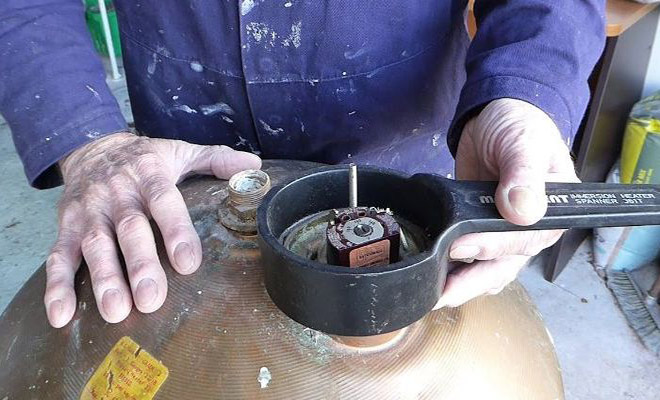
Either way, this should cost around £45 to £50 to hire a professional heating engineer to complete the job and dispose of the old immersion heater.
FAQs
The element heats water just like the element in a kettle.
The actual time taken will depend on the accessibility of the hot water tank and the immersion heater, along with the number of elements.
Ordinarily, a couple of hours should do it, but if you decide to do the job yourself, it could take a lot longer depending on your skill and experience level.
Once power is isolated, you can remove the thermostat and replace with a new one without removing or draining the water tank.
However, if you cannot read this, then you need to order a heater of similar size and should get professional advice.
However, you can easily alter the temperature by setting the immersion heater thermostat
To check the measurements, you can check the label at the top of the immersion heater, although if it is old, it may not be legible.
In this case, you should consult with a professional who will advise you on whether you need an 11", 14" or 27" immersion heater for the installation.
You can save money by setting the thermostat to a specific temperature, which will enable the immersion heater to turn it off when it reaches the set temperature.
How to Find & Hire an Immersion Heater Installer
While installing an immersion heater may seem like an easy job, it involves working with electrical fittings which can be dangerous if you are not accustomed to this type of work.
To avoid any incidents, you should definitely consider hiring an immersion heater installer to complete the job, which will cost around £90 to £100.
Before hiring the first tradesman you come across, you should enquire about their qualifications, which include an NVQ and diploma in domestic plumbing and heating along with a qualification in electrotechnical services.
To ensure the job is compliant with building regulation, you also want to consider working with a tradesman who is listed under the government's competent persons scheme or a member of an accredited association such as the NICEIC or CIPHE.
Another important thing you should ask about is their experience, as you should only hire someone who is skilled in installing immersion heater installers and has previous evidence in the form of reviews or even images.
Sources
https://plumbonline.net.au/why-choose-an-incoloy-water-heating-element/
https://www.greenmatch.co.uk/blog/2014/08/heat-pumps-7-advantages-and-disadvantages
https://www.renewableenergyhub.co.uk/main/solar-thermal-information/how-much-does-a-solar-thermal-system-cost/
https://www.thegreenage.co.uk/heat-water-electric-home/
https://selectra.ie/energy/guides/energy-saving/immersion-heater#the-pros-and-cons-of-immersion-heaters
https://www.hometree.co.uk/energy-advice/heating-cover/what-is-an-immersion-heater.html










